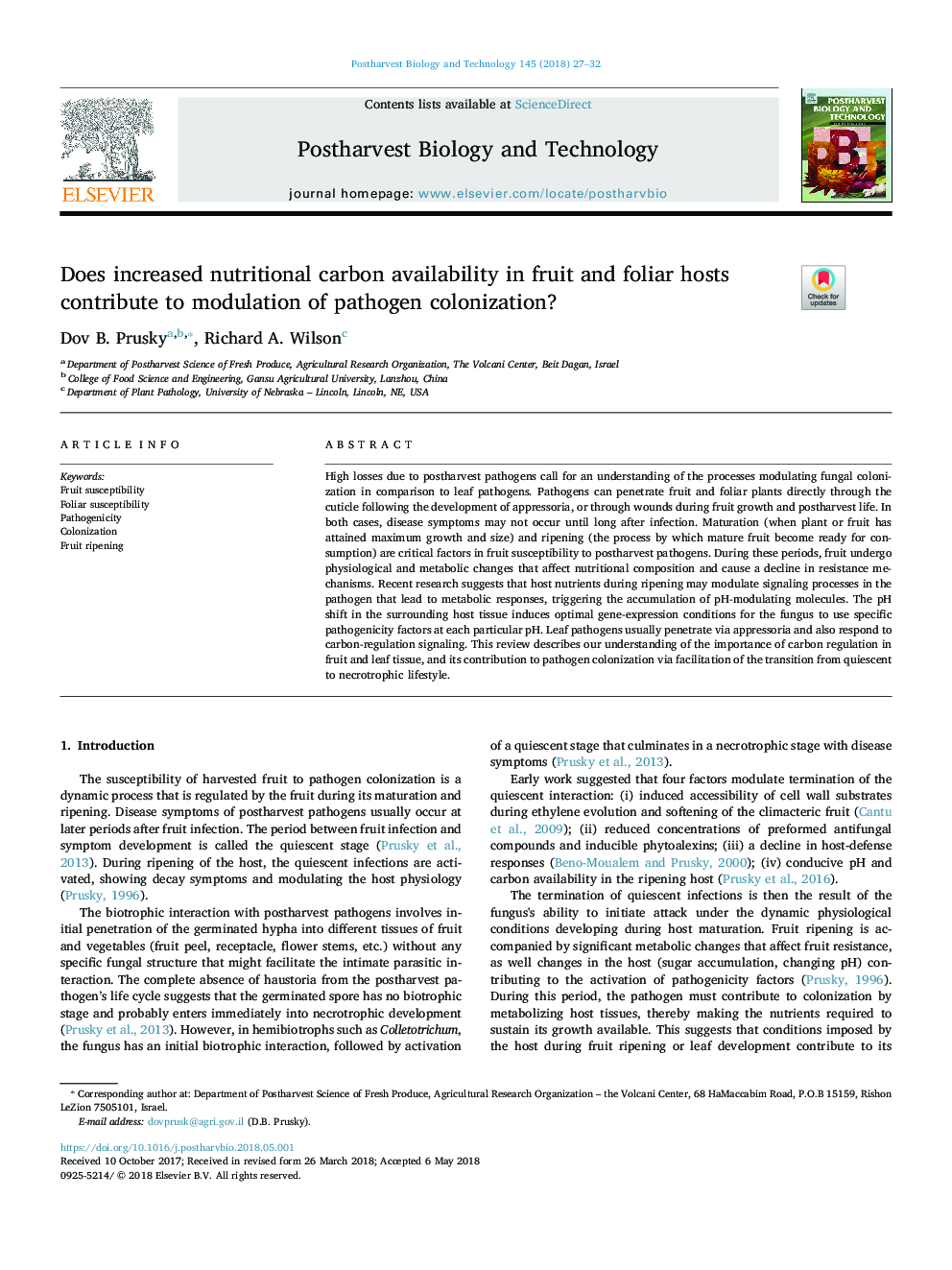| Article ID | Journal | Published Year | Pages | File Type |
|---|---|---|---|---|
| 8881765 | Postharvest Biology and Technology | 2018 | 6 Pages |
Abstract
High losses due to postharvest pathogens call for an understanding of the processes modulating fungal colonization in comparison to leaf pathogens. Pathogens can penetrate fruit and foliar plants directly through the cuticle following the development of appressoria, or through wounds during fruit growth and postharvest life. In both cases, disease symptoms may not occur until long after infection. Maturation (when plant or fruit has attained maximum growth and size) and ripening (the process by which mature fruit become ready for consumption) are critical factors in fruit susceptibility to postharvest pathogens. During these periods, fruit undergo physiological and metabolic changes that affect nutritional composition and cause a decline in resistance mechanisms. Recent research suggests that host nutrients during ripening may modulate signaling processes in the pathogen that lead to metabolic responses, triggering the accumulation of pH-modulating molecules. The pH shift in the surrounding host tissue induces optimal gene-expression conditions for the fungus to use specific pathogenicity factors at each particular pH. Leaf pathogens usually penetrate via appressoria and also respond to carbon-regulation signaling. This review describes our understanding of the importance of carbon regulation in fruit and leaf tissue, and its contribution to pathogen colonization via facilitation of the transition from quiescent to necrotrophic lifestyle.
Related Topics
Life Sciences
Agricultural and Biological Sciences
Agronomy and Crop Science
Authors
Dov B. Prusky, Richard A. Wilson,
